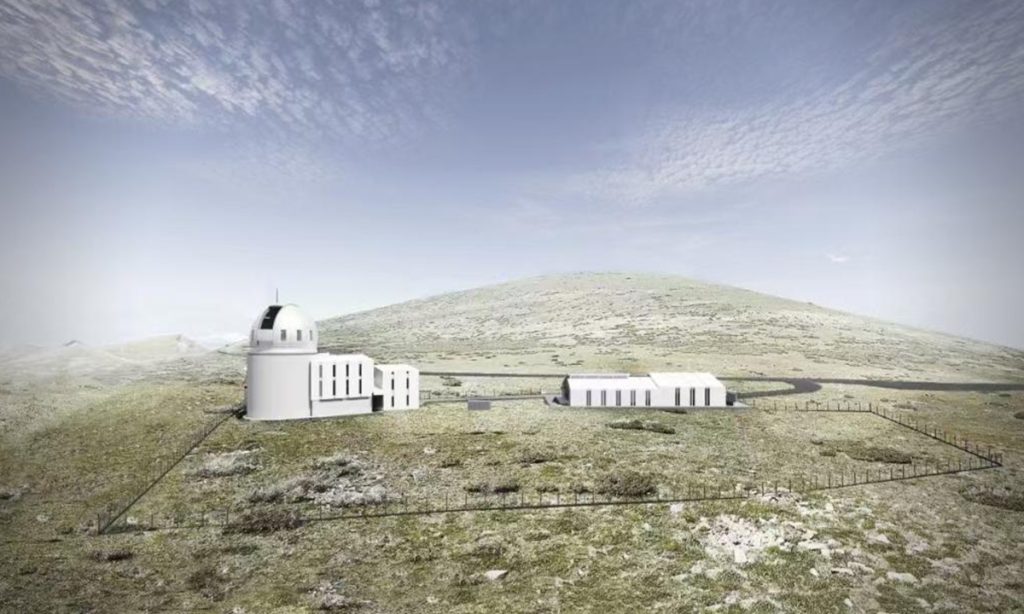China's WeHoST telescope to offer unprecedented view of solar eruptions with trial observations set in 2027: chief scientist

As China began building the supporting infrastructure for its next-generation solar telescope WeHoST (Wide-field and High-resolution Solar Telescope) on Tuesday in Southwest China's Sichuan Province, the Global Times learned from the project's chief scientist on Wednesday that the WeHoST will offer an unprecedented view of solar eruptions with technological breakthrough of "seeing both trees and forest" in solar observations.
Previous solar telescopes face a technology bottleneck: the inability to balance detailed observation with a comprehensive view. But WeHoST will combine both, offering high resolution alongside a large observational field, according to the scientist.
The telescope's 2.5-meter primary mirror will not only achieve higher observational resolution but also expand the field of view to three to four times that of existing equipment, fully covering the entire solar active region, said Ding Mingde, the project's chief director and a professor from School of Astronomy & Space Science under Nanjing University.
Ding told the Global Times on Wednesday that the main purpose of building WeHoST is to observe and study solar eruptive phenomena, scientifically known as solar flares and coronal mass ejections.
Ding said that studying solar eruptions is scientifically important because solar eruptions emit high-energy radiation, affecting the Earth's environment which may further impact human high-tech activities, such as communication and navigation in aerospace, as well as long-distance electricity and oil transmission.
"That's why we need to understand why the sun produces eruptions, when these eruptions occur, and how intense they are, as well as whether these eruptions impact Earth's environment after they occur," Ding said.
WeHoST, a national research instrumentation project, is led by Nanjing University in collaboration with the Nanjing Institute of Astronomical Optics and Technology and the Yunnan Observatories, both under the Chinese Academy of Sciences, Xinhua reported.
Construction of the telescope officially began in 2022. Upon completion, it will be the world's largest axisymmetric solar telescope, according to Xinhua.
The supporting infrastructure for WeHoST is situated at an altitude of 4,700 meters on an unnamed mountain in Daocheng county in Southwest China's Sichuan. Ding said the location is the result of a 10-year survey conducted by the Yunnan Observatories with selection criteria such as low population density, high altitude, good air quality with favorable humidity, and a high amount of sunlight.
"We plan to complete the construction of the entire telescope infrastructure, including the observatory and its dome by 2026 and then begin WeHoST's installation and trial observations in 2027," Ding said.
To address the technical challenges of the telescope, especially the issue of heat dissipation, Ding said a dual approach was adopted: on one hand, special optical cables are used at the focal point to block heat from entering; on the other hand, over 200 air tubes are evenly distributed at the back of the primary mirror to blow cool air and lower the temperature.
The research team also deployed ground-layer adaptive optics and speckle interferometry techniques to overcome the problem of unstable airflows and produce high-resolution images, Ding said.
Regarding international cooperation, Ding said that WeHoST is the only large solar telescope located in the Eastern Hemisphere, while telescopes in Europe and the US are situated in the Western Hemisphere. The geographical difference creates a complementary observation opportunity.
"For example, if we collaborate with Europe and the US, with each telescope observing for eight hours, 24-hour continuous observation can be achieved, which we refer to as 'round-the-clock observation,'" Ding said, adding that such global cooperation is highly beneficial for studying solar eruptions.